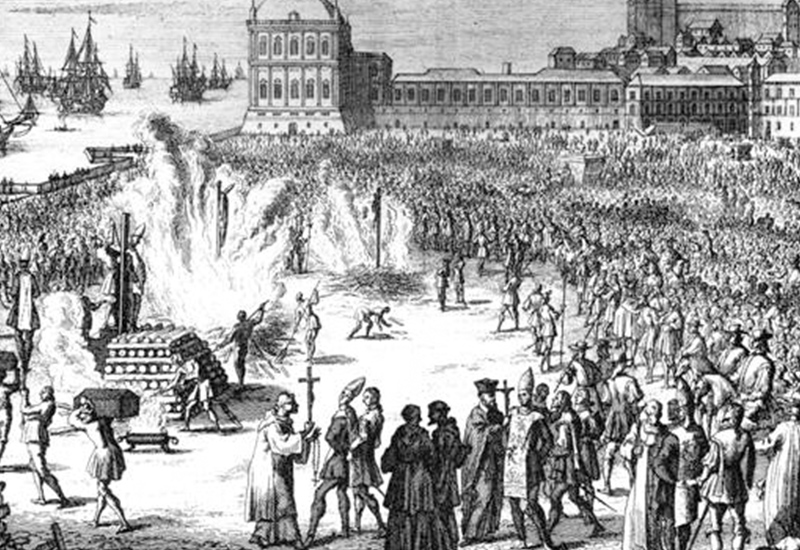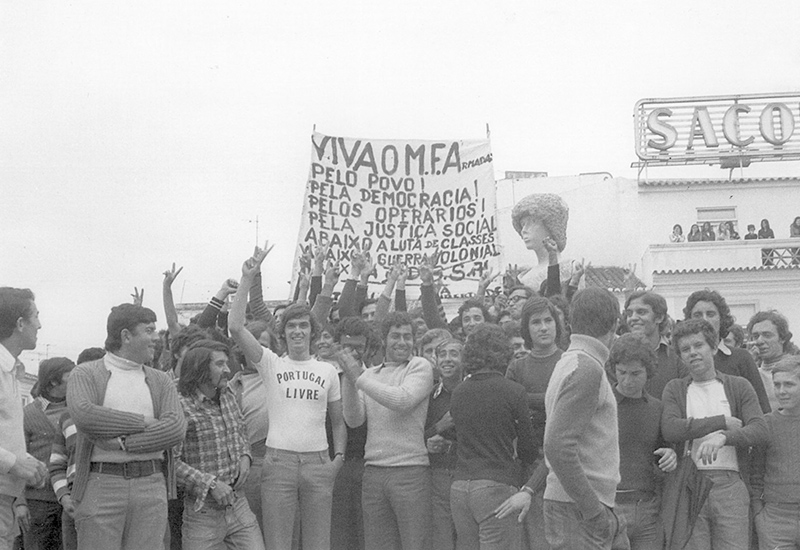We have all heard of the infamous Salem witch trials that took place between 1692 and 1693 in the province of Massachusetts, USA. But little is known about Portugal’s own witch trials that began some 132 years earlier.
The 16th century was a time when even Portugal couldn’t escape the witch trial saga that swept across Europe and America. Many were sent to their deaths. Contrary to the myths of so-called “witches” being burnt at the stake in Salem, here in Europe, death by burning was often used as a form of execution.
Even one of my ancestors was martyred by being burnt at the stake in c.1555. This punishment was for simply taking the role as a Protestant archdeacon during the English Reformation. What happened here in Portugal, however, should have been a warning to those in the New World.
The biggest trial in Portugal was the Lisbon witch trial of 1559, when five women were accused of witchcraft and sentenced to be burnt. During the trial, it was recorded that the accused had confessed to having intercourse with the Devil and claimed that it was more pleasurable than a relationship with mortal men. One of the offenders also confessed to killing up to 200 babies as part of a ritual. During the women’s imprisonment, it is said that the Devil had visited them and punished them in their cells for their confessions.

Confesion of two women accused of witchcraft in the 1559 trials. Courtesy of Biblioteca Nacional de Portugal www.bnportugal.gov.pt
After the five women were burnt at the stake, civil unrest began to spread, which resulted in Queen Catarina ordering a general inquiry into witchcraft in Portugal. The investigation resulted in the arrest of another 27 people who were suspected of sorcery. Of the 27 accused, only one was sentenced to death. The remainder of the offenders were sentenced to other punishments, such as prison, banishment, or whipping. However, it’s also believed thatthe investigation did result in another execution in Coimbra in 1560.
Whilst it was hoped that the witch trials in Lisbon would be the end of the persecution of sorcerers, the Portuguese Inquisition between 1626 and 1744 saw the arrest of 818 people who were charged for practising sorcery. Though the Inquisition may have tortured many, both physically and mentally, only one was executed. He was a 45-year-old man by the name of Luís de la Penha – an occultist who became known as Portugal’s most infamous witch.
Born in Évora in 1581, Luís de la Penha specialised in fortune-telling and folk healing, making a name for himself through means of legerdemain. Little did he know that this move would eventually cost him his life.
Having thrived on much popularity for his sorcery, he eventually gave up his job as a craftsman to further pursue his magical abilities. It is said that after attempting to heal the sick and enchant the ladies through satanic rituals, he became a person of interest to the early Inquisition and was later arrested in 1619 on charges of suspicion of witchcraft. However, with Luís de la Penha’s quick thinking, he confessed to his sins in the presence of King Felipe III and Queen Margaret. After an auto-da-fé, he was pardoned on the condition that he would not re-offend.
After serving almost two years in prison and having his property confiscated, Luís de la Penha was a free man. But as they say, “old habits die hard.” He began practising his dealings with the Devil again. He continued to cash in on his lucrative business until he was caught in March 1625. This was after helping a client to find a hidden treasure through the means of a satanic ritual and summoning a female demon. In accordance with the Inquisition’s procedures, his death sentence went into force. He was burnt at the stake one year after his arrest on the 29th November, 1626 in Évora.
One of his most famous prayers was the “Ensalmo do Asno” (the Donkey’s Ensalm), which was used to make others obey him. This prayer was a prime example of “Sympathetic Magic,” a concept found in what’s believed to be the ultimate sorcerer’s book, Livro de São Cipriano (The Book of St. Cyprian).
While Luís de la Penha was the only person to be executed for sorcery by the Portuguese Inquisition, he was one of the seven souls burnt at the stake for their involvement in witchcraft in Portugal.
Though Portugal’s witch trials may have been tame compared to other countries across Europe or America, they show that even Portugal couldn’t escape the witch trial frenzy that saw the execution of many during the 16th and 17th centuries. Ironically, Portugal subsequently became one of the first countries in the world to abolish capital punishment altogether. After a law was passed on the abolishment of capital punishment in 1867, the way was paved for the more proportionate justice system that we know today.
Did you know
An auto-da-fé was the ritual of public penance carried out between the 15th and 19th centuries. It included condemned heretics and apostates and was imposed by the Spanish, Portuguese, or Mexican Inquisition as punishment and enforced by civil authorities. Its most extreme form was death by burning (Wikipedia).
Main Image: Representation of the Autos de Fé of the Portuguese Inquisition in Terreiro do Paço, Lisbon Courtesy of www.wikipedia.org














